Red Bell Peppers: The Pro’s Guide to Picking, Prepping, and Perfecting Them
I’ll never forget my first summer working in a true farm-to-table kitchen. We got a crate of red bell peppers from a local farm, and they were nothing like the uniform, waxy ones you see from massive suppliers. These were heavy, with skin so deeply red it was almost glowing. The chef had me slice one for a salad, and the knife went through with this incredible, loud snap. The air just filled with a sweet, almost fruity smell. That’s the moment it clicked for me—the huge difference between a generic vegetable and a spectacular one.
In this article
It’s funny, a lot of people are surprised to learn that peppers are technically fruits. But in the kitchen? They’re vegetables, through and through. For ages, this member of the Capsicum annuum family has been a rockstar in kitchens all over the world. So, let’s go way beyond a simple list of benefits. We’re going to look at the red bell pepper like a pro, covering how to pick the best ones, what’s really going on with their nutrition, and the kitchen tricks we use to get the most out of them.
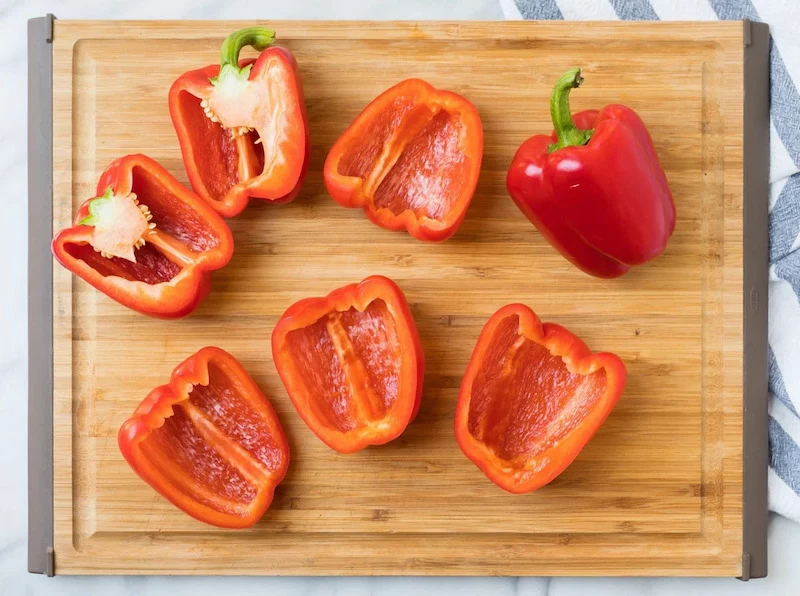
Understanding What Makes a Great Red Bell Pepper
Walking into a grocery store and seeing a mountain of red peppers is one thing. Knowing how to spot the absolute best one in the pile? That’s a different skill entirely. It all starts with understanding what you’re looking at.
The Journey from Green to Red
Here’s the main thing to remember: a green bell pepper is just an unripe red one. That’s it. Growers can pick them early and sell them as green peppers, or they can let them mature on the vine. As they ripen, their starches convert into sugars, which is why red peppers are so much sweeter and less bitter than their grassy-tasting green cousins. This extra time on the vine takes more resources, which is why red (and yellow or orange) peppers almost always cost more.
The nutritional change is pretty dramatic, too. A fully ripe red bell pepper can pack in more than double the Vitamin C and up to ten times the Vitamin A of a green one. A little patience on the vine goes a long way for both flavor and health.
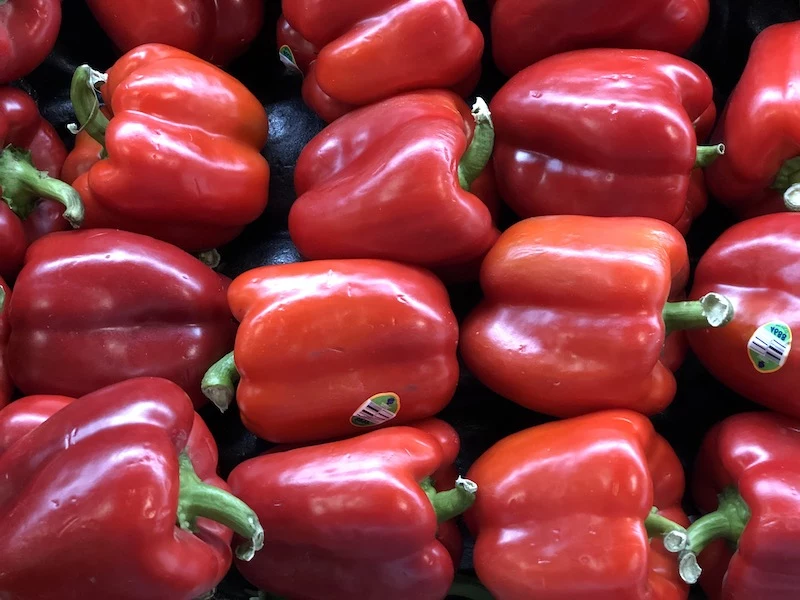
How to Pick the Perfect Pepper
When I’m training new cooks, I tell them to use all their senses. Don’t just grab the first one you see. Since you’re often paying a bit more for these beauties (expect around $1-$2 for a conventional pepper, while an organic one might be closer to $3-$4), you want to get your money’s worth.
- Look at it: You want a deep, vibrant, and consistent red color. The skin should be glossy and taut, not dull or wrinkly. Wrinkles are a dead giveaway for moisture loss and age. Pass on any with soft spots or big blemishes.
- Feel it: Pick up a few that are roughly the same size. The one that feels heaviest for its size is the juiciest and freshest. Give it a gentle squeeze; it should feel firm and solid, with thick walls.
- Check the stem: The little green stem at the top should look fresh and green, not brown, shriveled, or dried out. A sad-looking stem means it’s been off the vine for a while.
By the way, you might hear about official grading systems for produce that focus on things like perfect shape and uniform color. Honestly, for a home cook, that stuff doesn’t matter much. An oddly shaped pepper from the farmers’ market with great color and firmness will almost always taste better than a perfectly symmetrical but bland one from a big commercial farm.

The Real Deal on Red Pepper Nutrition
We all hear that peppers are good for us, but let’s talk about why. It’s not magic, just some really cool chemistry.
Vitamin C Powerhouse
Red bell peppers are one of the best sources of Vitamin C you can eat. A single medium-sized pepper can give you well over 150% of your daily recommended intake—that’s way more than you’ll get from most oranges! Vitamin C is a powerful antioxidant, and it’s also crucial for building collagen, which keeps your skin, bones, and blood vessels healthy.
Heads up! Vitamin C is sensitive to heat and water. If you boil your peppers or cook them in a stew for a long time, some of that vitamin leaches out into the water or gets destroyed. For the biggest C-boost, eating them raw is the way to go.
Quick Win: No time to cook? Just slice a few raw red pepper rings and layer them into your next sandwich instead of tomato. You get instant crunch, sweetness, and a huge vitamin hit.
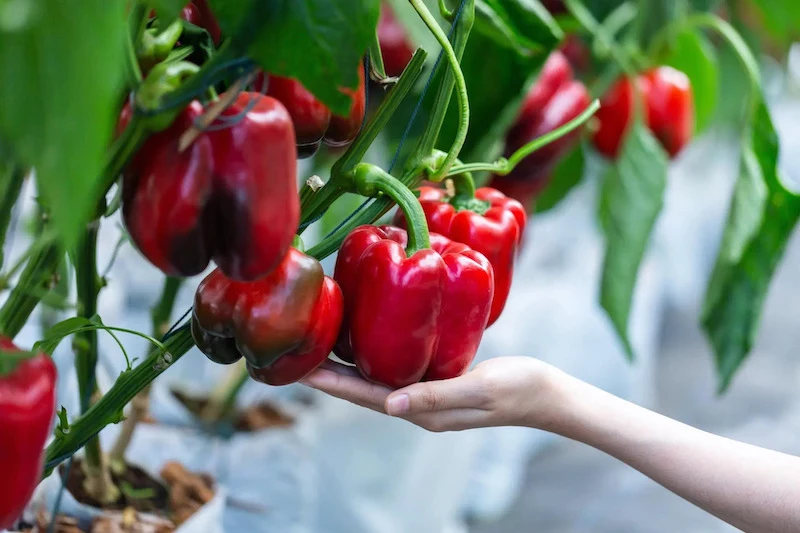
Color, Carotenoids, and Vitamin A
That gorgeous red color comes from compounds called carotenoids, mainly beta-carotene. Your body converts this into Vitamin A, which is essential for good vision and a strong immune system. Here’s a pro tip: Vitamin A is fat-soluble. That means your body absorbs it much better when you eat it with a little fat. So, dipping raw peppers in hummus, drizzling olive oil on a pepper salad, or sautéing them in a bit of oil isn’t just for flavor—it helps you get more of the good stuff.
Pro Techniques for Your Home Kitchen
Knowing how to handle your ingredients is just as important as choosing them. In a pro kitchen, it’s all about efficiency and technique. Here are the core methods you can easily use at home.
How to Store Them (and Freeze Them!)
The worst thing you can do is leave your peppers suffocating in one of those thin plastic produce bags. They release ethylene gas, and trapping it just makes them go bad faster. The best spot for whole, unwashed peppers is in your fridge’s crisper drawer, where they can last for one to two weeks. Once cut, pop them in an airtight container and use them within a few days.

Want to freeze them? It’s super easy. You don’t even need to blanch them. Just wash, core, and chop the peppers into the size you’ll want later (diced for soups, strips for fajitas). Spread them in a single layer on a baking sheet and freeze them solid for an hour. Then, transfer the frozen pieces to a freezer bag. They’ll last for months! Just know that thawed peppers lose their crispness, so they’re best for cooked dishes like sauces, stews, and stir-fries, not for raw salads.
The Fastest Way to Prep a Pepper
Here’s a trick that can take you from fumbling with a pepper for two minutes to having it perfectly prepped in 30 seconds flat. Seriously.
- Lay the pepper on its side and slice off the very top (with the stem) and the very bottom.
- Stand the pepper up on one of the flat ends. It’s now a stable cylinder.
- Take your knife and run it down the inside wall, cutting the flesh away from the white pith and seeds. Just follow the curve.
- Unroll the pepper, and you’ll have one or two large, flat panels, ready to cut. The seeds and core are left behind in one neat little bundle.
Ready for a challenge? Time yourself the old way (cutting it in half and scooping out seeds), then try this method. I bet you’ll be amazed at how much faster it is.
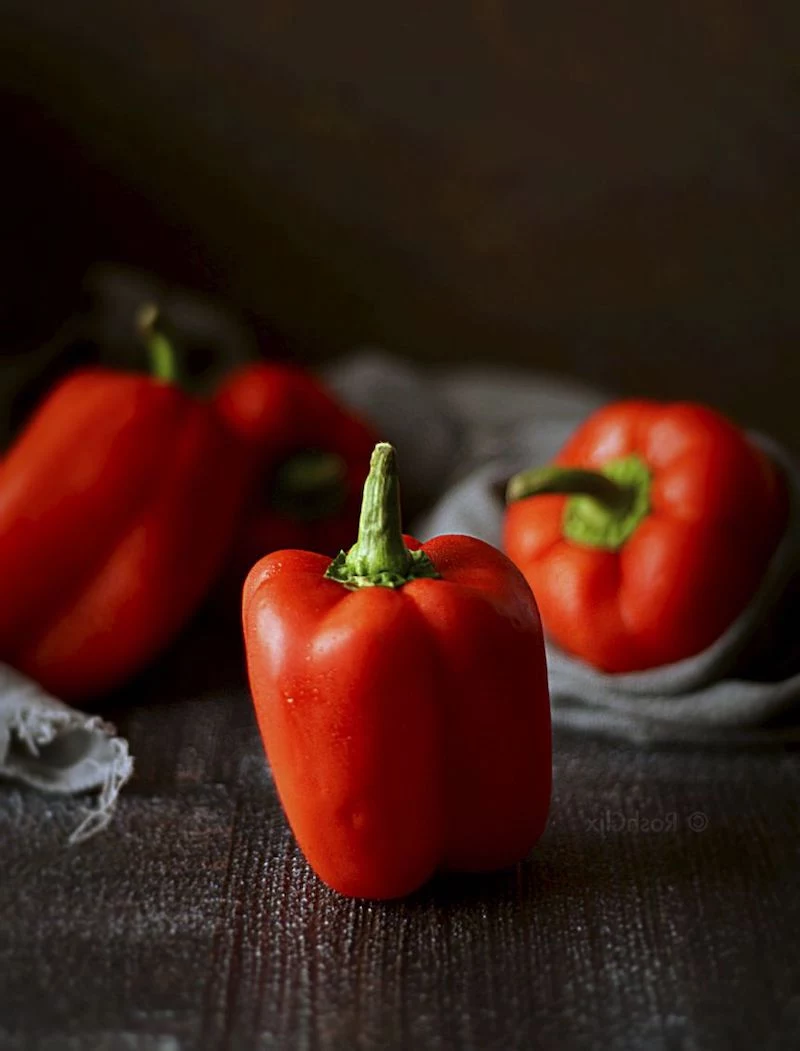
The Art of Roasting Peppers
Roasting completely transforms a red pepper, making it smoky, sweet, and silky. The key is to char the skin properly so you can peel it off.
The Method: You need high, direct heat. The best way is to place the peppers directly under your oven’s broiler, set to high (around 500°F / 260°C). You can also do this over a gas stove burner or on a hot grill. Turn the pepper every 3-4 minutes until the skin is blistered and blackened on all sides. This usually takes about 10-15 minutes total. (Alternatively, you can roast them in a regular oven at 450°F / 230°C for about 20-25 minutes, though the skin might not peel quite as easily).
The ‘Sweating’ Step: This is non-negotiable. As soon as the peppers are charred, use tongs to move them into a bowl and cover it tightly with plastic wrap or a plate. The trapped heat creates steam, which loosens the skin. Let them sit and sweat for at least 15-20 minutes.

Peeling: After they’ve steamed, the skin should slip right off with your fingers. Please, whatever you do, DO NOT rinse the pepper under water to get the skin off! You’ll wash away all that incredible smoky flavor you just worked to create.
Creative Recipes & Pro Fixes
Once you’ve nailed the basics, you can start having some real fun. Here are a couple of ideas and fixes for common issues.
Homemade Roasted Red Pepper Sauce
This is a thousand times better than anything from a jar. It’s fantastic on pasta, grilled chicken, fish, or just as a sandwich spread.
To whip this up, you’ll need:
- 2-3 roasted and peeled red peppers
- 1 clove of garlic
- A good splash of quality olive oil
- A pinch of salt
- A little squeeze of fresh lemon juice
Just blend everything until smooth! For a nutty, Spanish-style romesco sauce, add a handful of toasted almonds. For a creamy pesto vibe, toss in some Parmesan cheese and fresh basil.
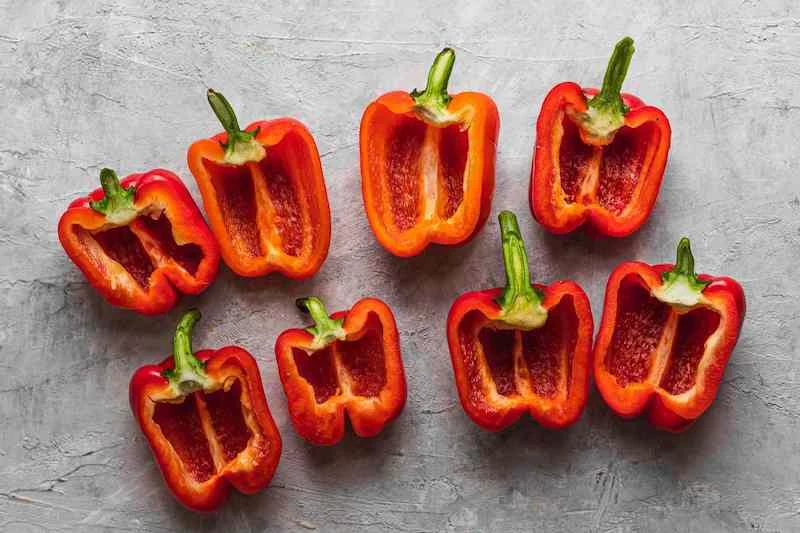
Troubleshooting: Common Problems & Pro Fixes
- “My peppers taste bitter!” This usually means they weren’t fully ripe. Roasting is your best friend here, as the high heat caramelizes the natural sugars and masks any bitterness.
- “My peppers are getting soft and wrinkly!” Don’t toss them! While they’re not great for a crisp salad anymore, they are absolutely perfect for making sauces, soups, or a rustic pepper stew (peperonata) where that soft texture is actually a plus.
- “My roasted pepper skin won’t peel!” Ah, a classic. You probably didn’t char it enough or didn’t let it sweat for long enough. You have to be brave! That skin needs to be really black and blistered before you steam it.
A Quick Word on Sourcing and Safety
As a food pro, I think it’s important to be straight up about the whole picture.
You’ll sometimes see bell peppers on lists that highlight produce with higher levels of pesticide residue. It’s important to know what this means. It doesn’t mean the food is unsafe—the residue levels are almost always far below the legal safety limits. My advice is simple and balanced: if you’re concerned and it fits your budget, buying organic is a great choice. But if you can’t, please don’t stop eating peppers! The health benefits of eating tons of fruits and vegetables, conventional or organic, are massive and far outweigh the potential risks. No matter what, always give your peppers a good wash under running water.
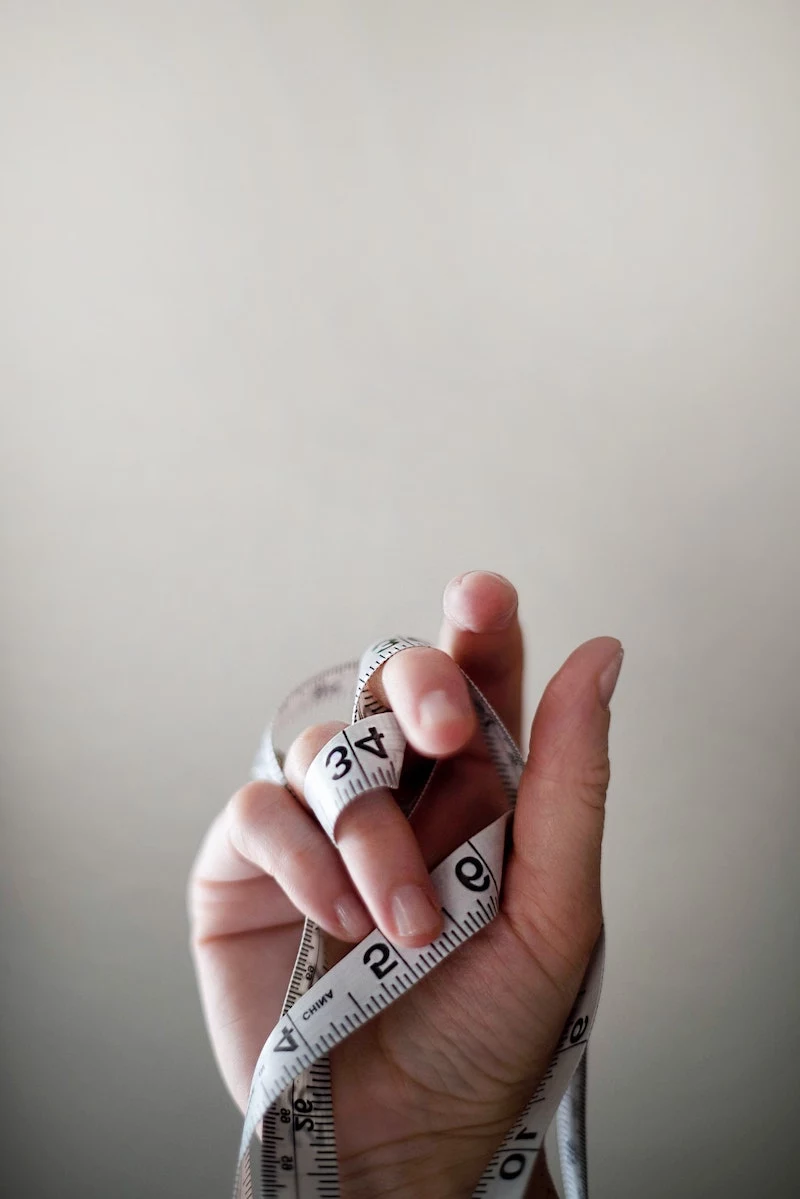
Oh yeah, and a quick note on sensitivities. Peppers are part of the nightshade family, along with tomatoes and eggplant. A small number of people have sensitivities to nightshades. If you notice that peppers give you trouble, it’s always best to chat with a doctor or a registered dietitian. Food affects everyone differently!
Final Thoughts
The humble red bell pepper is so much more than just a bit of color in a salad. It’s a versatile, delicious, and incredibly nutritious ingredient. When you know how to choose the best ones and use a few simple techniques to bring out their flavor, you can really take your cooking to the next level. Treat them right, and they’ll never let you down.
Inspirational Gallery
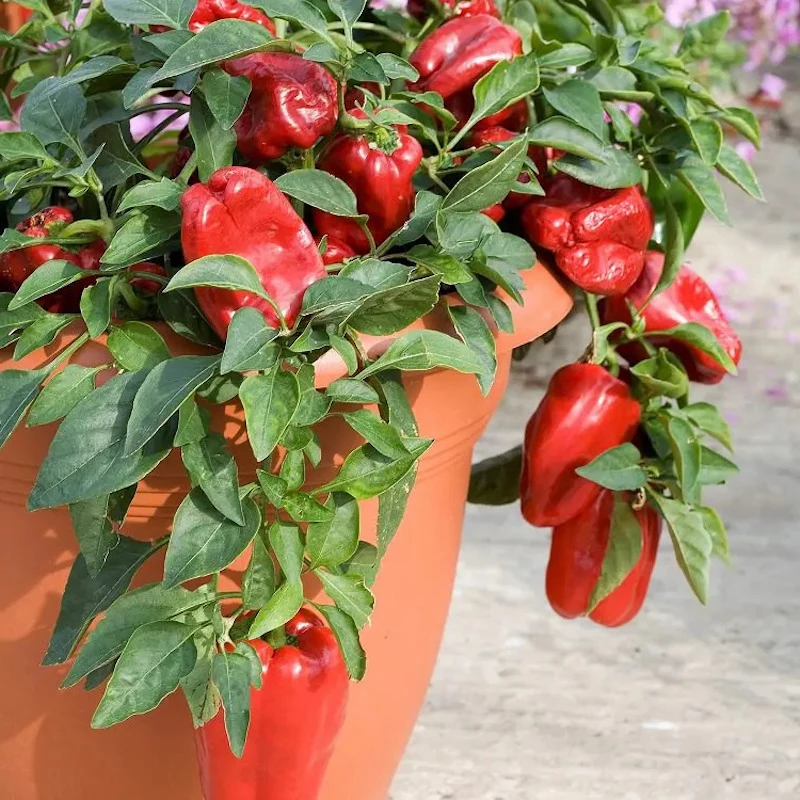
Inspired to grow your own vibrant peppers, even on a balcony? It’s surprisingly achievable.
The key is giving them exactly what they crave: sun and root space. Opt for a large container, at least 5 gallons (or 20 liters), to prevent the roots from becoming constrained. Use a high-quality, well-draining potting mix; something like FoxFarm Ocean Forest provides a fantastic start. But the real game-changer is feeding. Once your plant begins to flower, switch to a weekly feed with a fertilizer high in potassium and phosphorus (often sold as ‘tomato feed’). This encourages the plant to focus its energy on producing beautiful, sweet peppers rather than just leafy growth.










